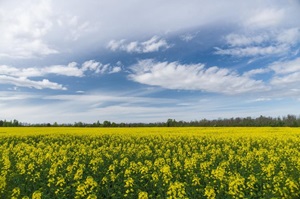- Finance Investing
- Energy Technologies
- Energy Technologies
- Building Innovations
- Energy Efficiency
- LED Lighting
Stop and Smell the Market Indicators

The Wall Street of Flowers
The Netherlands is the trade capital of the global rose market and home to the world’s largest flower market, Royal FloraHolland. Every day, 30 million plants and flowers from all over the world are auctioned at Royal FloraHolland, with operations covering over 14 million square feet—equivalent to 243 football fields. Almost half the world’s flowers and plants pass through one of the 11 cooperatively-run regional flower auctions, with buyers and sellers bidding on trading floors just like a typical stock exchange in financial markets. The sheer scale of this market alone gives reason to why manufacturers would want to specialize in lighting solutions for rose cultivation. Yet bidding wars at Royal FloraHolland are just the beginning.
More Competition, More Opportunities
Developing countries in Africa are starting to take up a larger share of the European market for cut flowers and foliage. The CBI Ministry of Foreign Affairs reports that major suppliers Kenya, Ecuador, Ethiopia, and Colombia have seen a 20%-60% growth in exports of flowers and foliage to Europe. Producers in these regions are strengthening their position in global production and trade, mainly due to favorable growing circumstances, rising demand for competitively priced flowers in Europe, and improved transportation. To remain competitive, European growers are looking to advanced lighting solutions for delivering quality, reliability, and consistency in supply. This is why major lighting manufacturers like Philips and OSRAM have noticed and are taking stock in this burgeoning market. Companies may want to tap into this blossoming market as investment opportunities and demand for unique lighting solutions continue to grow out of this competitive space.
For more details, a recent report from Guidehouse Insights, LED Lighting for Horticultural Applications, examines the global market potential for horticultural lighting.